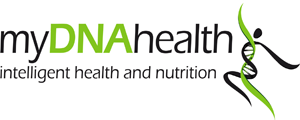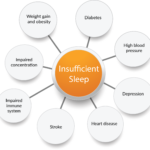Linking genes, weight gain and satiety
When you are trying to help a client loose weight, one of main barriers to them sticking to a calorie restricted diet is that they feel hungry. If the client feels hungry, they are much more likely to grab the nearest high energy dense snack meaning they can easily exceed their calorie intake.
Satiety is a term used to describe inhibition for eating and it is the interval between a client’s meals; between breakfast and lunch and lunch and dinner. Whereas satiation is when the client puts their knife and fork down when they have ended a meal. Both factors are important to understand when you are trying to get a client to consume less calories in order to help them to feel full and not restricted in any way.
How does it work?
Think of the brain as the control centre of the appetite with many signals that are generated inside the body from our physiology, hormones, peptides and metabolites. Therefore, hunger is not just signalled by our physiology but is also signalled by things going on in our external environments such as visual stimulants that sends signals to the brain. The stimulants can trick the brain into making your client feel hungry or full.
Nutritional genomics science is evolving at a rapid pace and we are starting to understand that regulation of our appetite is influenced by many factors. For example, we are increasingly aware that our sleeping preferences play important roles in prompting us to eat. The CLOCK gene forms part of our genetic internal body clock and variations in this gene have been associated with altered metabolic function and appetite control.
The Fat Mass and Obesity Associated (FTO) gene has a genetic variant which has been consistently associated with appetite regulation, energy expenditure and risk of obesity. Researchers found that people with the risk allele were hungrier and their effect of the hunger hormone was less suppressed. FTO is expressed in most tissues but highest levels are found in the hypothalamus, a key brain area involved in energy balance.
The Alpha-Melanocyte-stimulating hormone forms a crucial part of our satiety response in the brain by binding to the melanocortin 4 receptor (MC4R) to suppress appetite. Carriers of risk allele of the MC4R gene show decreased responsiveness to the appetite suppressing Alpha-Melanocyte-stimulating hormone. This indicates a more severe tendency to crave fatty foods especially in women and a predisposition to store more visceral fat.
What’s the future trends to help people reach their weight goals?
Traditionally a client seeking help from a nutritional practitioner to lose weight would often be recommended a type of calorie-controlled diet. However, the client who is a carrier of the risk alleles – FTO, MC4R and/or CLOCK – is going to feel hungrier on this type of restricted diet and the nutritional professional will be unaware of this.
Since the sequencing of the human genome and identification of interactions between genes and nutrients has transformed the concept of personalised nutrition. Out of this emerged the nutrigenomic and nutrigenetic disciplines that investigates the complex interactions between environmental factors such as diet, lifestyle and genes and the potential to individualise diets using dietary, phenotypic and genotypic data.
Find out how the new Optimal Health Pro nutritional genomics test can benefit your practice.



